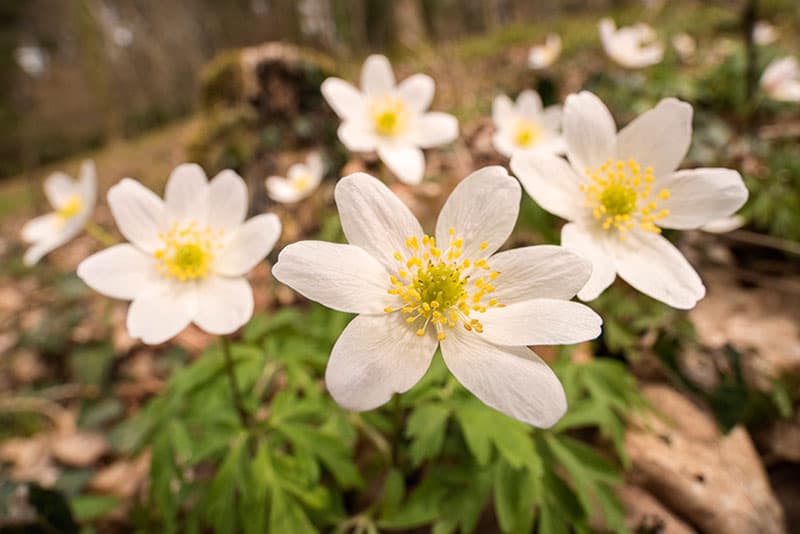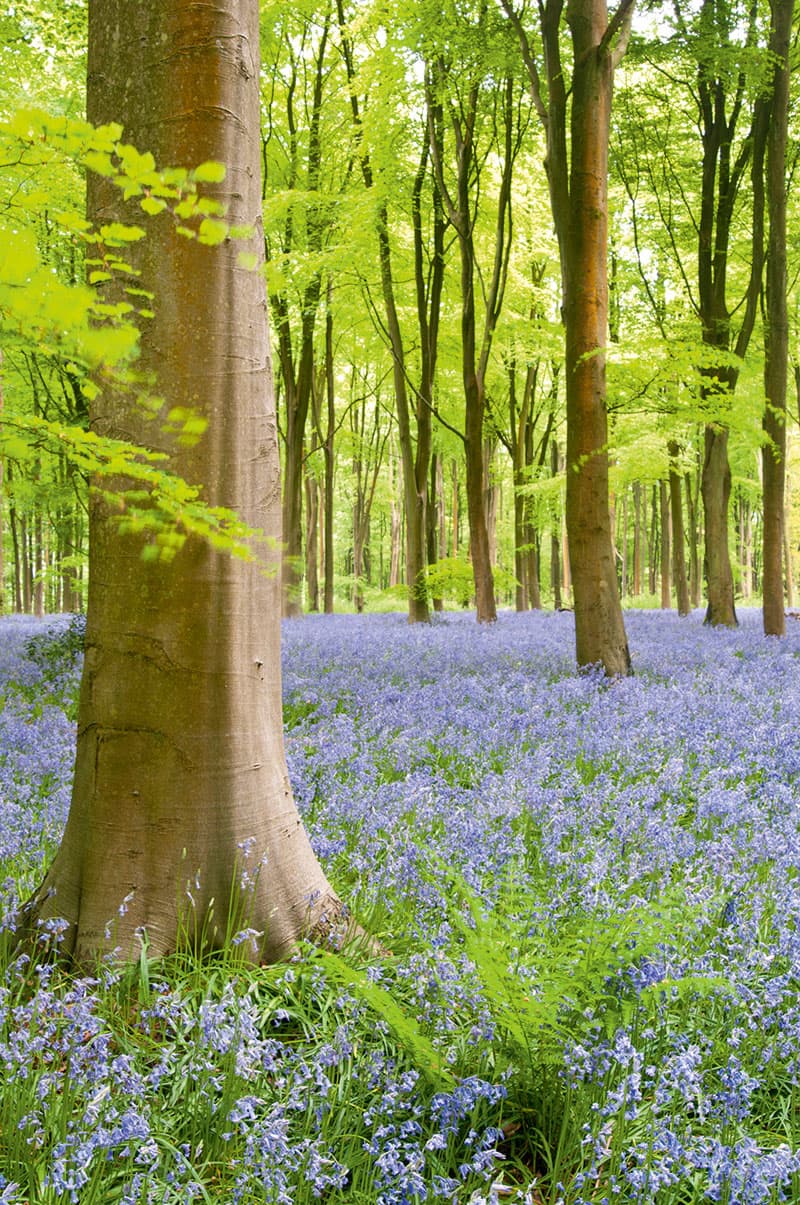We all love close-ups of flowers, but to provide context swap your macro lens for a wideangle one. Wideangles typically have a short minimum-focusing distance, enabling photographers to take photographs from up-close, often within 50cm. By getting close and going wide, you can show blooms within their environment and capture flower images with a three-dimensional feel. You could buy a dedicated wideangle macro – like Laowa’s LX FX 15mm f/4 Wide Angle macro – but a standard wideangle lens will also suffice.

Credit: Ross Hoddinott
1. Achieve front-to-back sharpness
To achieve front-to-back sharpness, select a small aperture, such as f/16. Also think carefully about where you focus within the scene. One method is to calculate the hyperfocal distance, with the help of an app (e.g. PhotoPills). Or try double-distance focusing: this requires you to focus twice as far into the scene as the closest object.
2. Tread carefully
When getting close and wide to flowers you need to take extreme care not to damage them. Don’t ever knowingly trample flowers, and always be careful where you tread and place the legs of your tripod. Don’t leave footpaths and always be considerate – your subject’s well-being is more important than your photo.
3. Shoot handheld – at first!
The grandeur and impact of a wildflower landscape can be greatly diluted if your composition isn’t carefully structured. Camera height, orientation and perspective are all important considerations. To identify the best shooting angle it can be worthwhile working handheld at first. It will give you the freedom to quickly and instinctively explore various viewpoints. Once you’ve experimented, set up a tripod to perfect the composition that you feel works best.
4. Shoot in golden light
Consider the light’s quality and direction. The golden hours (at sunrise and sunset) will produce the most attractive light, so set your alarm early and stay out late.

Credit: Ross Hoddinott
5. Use a polariser
Polarising filters allow you to regulate the effects of polarised light. They saturate clear blue skies and reduce, or even eliminate, the glare reflecting from glossy or wet petals and leaves. They will give your photos some vibrancy. Whether you are shooting a carpet of bluebells or a field of poppies, a polarising filter will really help bring your shot alive. Simply rotate the filter’s outer ring until you achieve the level of polarisation and effect you desire.
6. Get down low
When photographing swathes of flowers, a worm’s-eye view can prove very attractive. A low perspective will make blooms appear distorted, more imposing and lifelike. The most comfortable way to compose low-level shots is by using a camera with a variangle LCD, or by attaching a right-angle finder. Use a wideangle or fisheye lens and select a small aperture to generate a large depth of field. Flowers will typically stand out best against a colourful blue sky.
7. Timing is important
Owing to the ephemeral nature of wildflowers, timing is one of the key considerations. You want to visit wildflower landscapes when the display is close to its best. The optimum time can vary one year to the next because of weather and temperature. Hence closely monitor the wildflowers’ progress by making repeat visits to landscapes where flowers are the integral feature. For example, regularly visit coastal cliff tops in early May when thrift is likely to be nearing its peak.

Credit: Ross Hoddinott
8. Avoid wind
Windy weather can torment flower photographers, making it a struggle to focus and record subjects sharply. While subject motion is more obvious at higher magnifications, wind will still cause problems when shooting wider views. A faster shutter speed will be required to keep flowers and foliage crisp and sharp – increasing ISO sensitivity is normally the most practical way to generate this. I look for a forecast with a predicted wind speed of below 10miles per hour. If windier, I tend to head to the shelter of woodland.
9. Think about the background
Simply including a colourful carpet of flowers in the foreground far from guarantees a great photo. You need to create a strong composition overall, boasting interest and balance. Look to include key interest in the background – a building, landmark, or dramatic scenery, perhaps. This will help create context and convey a better sense of place than a close-up is capable of doing. Select your viewpoint carefully and ensure that your foreground and the background complement each other, for example, a wide view of alpine flowers contrasted against a mountainous backdrop.

Credit: Ross Hoddinott
10. Shoot woodland interiors
One of the best places to capture environmental views of spring flowers is woodland. Bluebells, wild garlic and anemones can create vast, colourful carpets. However, in bright daylight, woodland can prove horribly contrasty and awkward to photograph well. Instead, visit on a bright, overcast day. Low-contrast light will allow you to capture colour and detail authentically.







